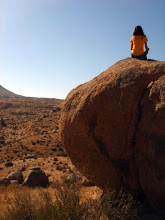I still have this vivid picture: I stood in ice cold weather, glaring at a gorgeous and colorful ice castle, eating sugar-coated haws, one of my favorite snacks. I was so intrigued by the craftsmanship of the arts in front of me and completely forgot I’m standing in a winter weather that is below zero degree! That is one of my most unforgettable childhood memories. That was the Lantern Festival.
Looking at the rituals and celebrations of the Lantern Festival and Holi, interestingly but not surprisingly, both the Lantern Festival and Holi bring lots of fun, music, play, and color of the year. They both celebrate the coming of spring based on lunar calendar, and both related with the traditional mythology. Once again it is proved that Chinese and Indian culture shares a lot of similarities. Once again, we learnt from our ancestors that spring is the beginning of a year, is the time of music, color, food, and play, and is a promise of joy, celebration, fun, and prosperity.
There’s crazy coincidence among several festivals this year. First the Chinese New Year is on the same day as Valentine’s Day. Now the Chinese Lantern Festival is on the same day as the start day of Holi! While it was February 28th and it has already passed, better late than nothing, I still think it is worth to celebrate, at least in words.
The Lantern Festival- did you raise the lantern?
The Lantern Festival(元宵节) is celebrated on the 15th day of the first lunar month and marks the end of Chinese New Year festivities. The Lantern Festival dates back to the Han dynasty in 2000 years ago. Why the 15th day? It is the first night to see full moon. According to the Chinese tradition, at the very beginning of a new year, when there’s a bright full moon hanging in the sky, there should be thousands of lanterns hung out for people to appreciate.
So what do people do to celebrate?
Lantern, of course, is the most common items you see during celebration. Some cities in North China, like my hometown Jilin China
Besides, master craftsman construct multi-shaped paper lanterns that resemble butterflies, dragons, birds, dragonflies, and many other animals and creatures. But the main color is red. People will try to solve the puzzles on the lanterns and eat Yuan Xiao (元宵) (glutinous rice ball) and get all their families united in the joyful atmosphere, like what I used to do when I was a kid. Besides, parade, dragon and lion dances, firecrackers, and watching festival celebration gala are part of the activities.
What do people eat?
The glutinous rice puddings, also called Yuan Xiao, are the main dish. Yuan Xiao is made of sweet rice flour into sticky glutinous balls often rolled around a filling of sesame, peanuts, vegetables, or meat, mainly sweet. It is cooked in water or soup. The round shape symbolizes wholeness and unity.
Holi- Bura na mano, Holi hai!
I’m not as familiar with Holi as with the Lantern Festival. All the information is second hand. Feel free to though your knowledge on the festival of color.
According to wikipedia, Holi is a spring festival celebrated by Hindus, Buddhists, Sikhs, and others. It is an ancient festival of India
Holi is celebrated at the end of the winter season on the last full moon day of the lunar month, which usually falls in the later part of February or March. This year’s Holi festival starts on February 28 and continues for 2 days till March 1, 2010.
Celebrations begin the night before with the burning of bonfires, also known as Holika, and go on the next day with people showering colored powder and colored water at each other. Traditionally, the throwing of natural colored powders which was made by herbs has a medicinal significance—to combat the viral fever and cold in the spring season. I have seen pictures of people throwing all kinds of colors at each other and just the moment is fun enough to watch!
So what about food? Sweet desserts and corn are offered to the god of fire during the bonfire; Kanji, gujiy, Khoya are all delightful sweets and drinks.
Looking at the rituals and celebrations of the Lantern Festival and Holi, interestingly but not surprisingly, both the Lantern Festival and Holi bring lots of fun, music, play, and color of the year. They both celebrate the coming of spring based on lunar calendar, and both related with the traditional mythology. Once again it is proved that Chinese and Indian culture shares a lot of similarities. Once again, we learnt from our ancestors that spring is the beginning of a year, is the time of music, color, food, and play, and is a promise of joy, celebration, fun, and prosperity.
Happy Lantern Festival! And don’t worry, it’s Holi!






No comments:
Post a Comment